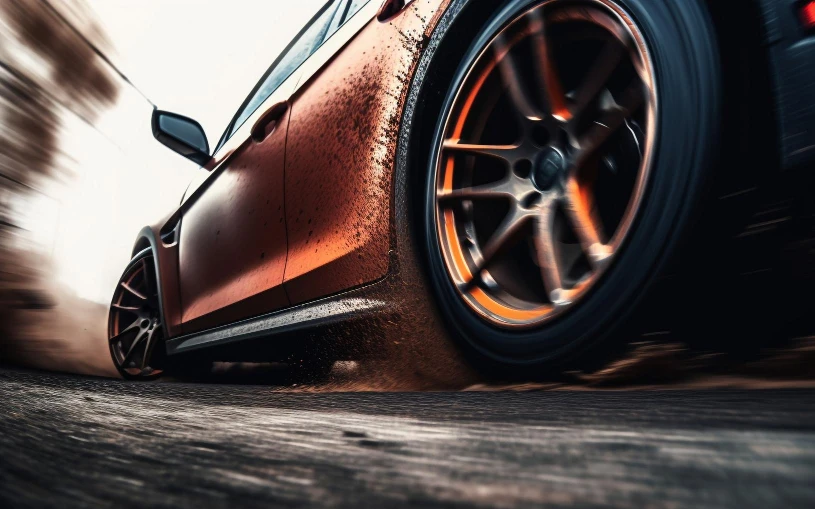What to do in aTyre Blowout
Often people will say “There was nothing I could do”, but…
Every time you drive up a kerb, through a pothole that you could have avoided, park with your tyres pressing against a kerb or leave weeks between tyre pressure checks remember this thought:
It usually takes several months of neglect for a tyre to ‘burst’ and there is a very simple thing that you can do about it – look after your tyres a bit better!
If you look after your tyres but are still unlucky enough to get a blowout or high speed puncture the guidelines below will help you to cope and perhaps avoid an accident like the one shown on the right where a BMW has a rear tyre blowout.
Below you will find a video explaining how to deal with a blowout in a large recreational vehicle – this will show the dynamics of a vehicle when a tyre blows, the same principle apply to smaller vehicles.
Action for rear tyre blowouts
Your car will tend to weave about, especially at speeds over 50mph. The best action is to hold the steering wheel firmly and let the car slow down by itself.
Your immediate instinct might be to brake, but if the car is starting to move sideways braking will make matters worse causing the car to spin. Sudden braking is the single worst thing that you can do if a tyre blows out. Repeat this thought to yourself over and over so that you are programmed to act if the worst happens.
Keep looking ahead and turn your steering wheel to keep in a straight line. Maintain momentum by accelerating and then ease off the gas to slow down – accelerating is not done to speed the car up, simply to maintain momentum and minimising the risk of and effect of a side slide. Changing to a lower gear might help in a front wheel drive car if you can control the steering with one hand.
Action for front tyre blowouts
Front type punctures will cause the car to pull heavily to one side. Steer firmly to correct the pull.
Leave the footbrake alone… If there is space ahead, concentrate on steering and allow the car to lose speed naturally. If you use the footbrake after gaining initial control, be very gentle…
Pulling the parking brake on and off repeatedly can help you to slow down but care must be taken not to lock the back wheels because this could cause the car to pivot around the damaged wheel and spin – your main aim is to keep the car on course and lose speed naturally. Changing down might help in a rear-wheel drive car as engine compression will lower the speed but again no snatched or jerky changes. Remembering that extra effort will be required for steering, it may be safer to keep your hands on the wheel.
General
Burst tyres are dead. You can drive on the tyre very slowly to a safe place but do not attempt to go any further than is absolutely necessary.
Repairable punctures can turn into irreparable tyres if you drive on them. Read your car’s handbook for information about jacking your car safely and changing a wheel. If you have a space saver spare tyre, keep your speed down – your car will not be as stable as with the full size tyre.
Tyre checks:
- Check your tyre pressures weekly
- Check tyres for damage weekly with a quick visual check every day
- Check your tyres before long journeys
- Check your handbook for correct tyre pressures for different vehicle loads
- Check your tyre pressure more often during heat waves
Stay calm – stay safe!
LinkedIn: https://www.linkedin.com/company/finixx-global-industry-co-ltd-?trk=company_logo

